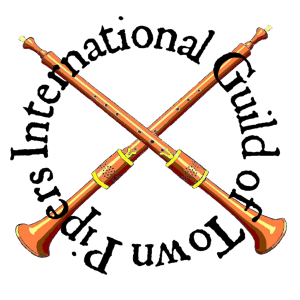Oxford Waits
“Oxford waits were mentioned in 1501 and may have existed in the Middle Ages. Payments to city waits or official musicians were recorded in 1574; there were usually six, who had to provide themselves with silver scutcheons, which became the city’s property on their death or resignation. They were expected to perform on public holidays and civic occasions and a gallery was built on the east side of Carfax conduit for them to play from during royal visits. By 1603 the waits had the sole right to perform in the city and suburbs and a new appointment to the office could only be made from apprentices of freeman musicians. By mid-century a minimum standard of ability was requested. In 1673 when the waits were below strength, that qualification was waived, and the council agreed to buy new liveries and badges and to uphold their sole performing rights except during the Act and assize week. All other musicians, except those employed by the university, should be punished as vagrants. In the late 17th century many city waits also kept ale-houses, notably John Davis at the Goat’s Head, near Bocardo dancing-school, in 1690. In 1680 the council complained that music had not been played during the franchise-riding and ordered that in future the waits should sit at the end of the mayor’s boat and also play throughout dinner as had been the custom. In 1698 the waits were threatened with the removal of their liveries unless they played as usual. New cloaks were provided up to 1712 but thereafter no reference to waits has been found.
Fiddlers played at the franchise-riding between 1747 and 1751, (fn. 11) the council paid for music and drums in 1753, (fn. 12) and a city band formed part of the procession at peace celebrations in 1763.”
From ‘Social and Cultural Activities’, A History of the County of Oxford: Volume 4: The City of Oxford (1979), pp. 425-41.
For great civic occasions like royal visits, the Oxford Waits played from a gallery on the Carfax conduit, which was built in 1617. In 1771 it was moved out of the city centre to ease traffic congestion, and rebuilt by Lord Harcourt to adorn the grounds of his newly built home at Nuneham Courtenay. The image shows the structure on the right.
Alderman J.Harris (Mayor 1663-4) was reimbursed £15 19s 0d for new liveries for the City Waits in 1668-9.
Alderman J. Townsend (Mayor 1669-70) claimed £15 19s 6d for new livery coats for the City Waits in 1668 and £17 1s 4d in 1669
